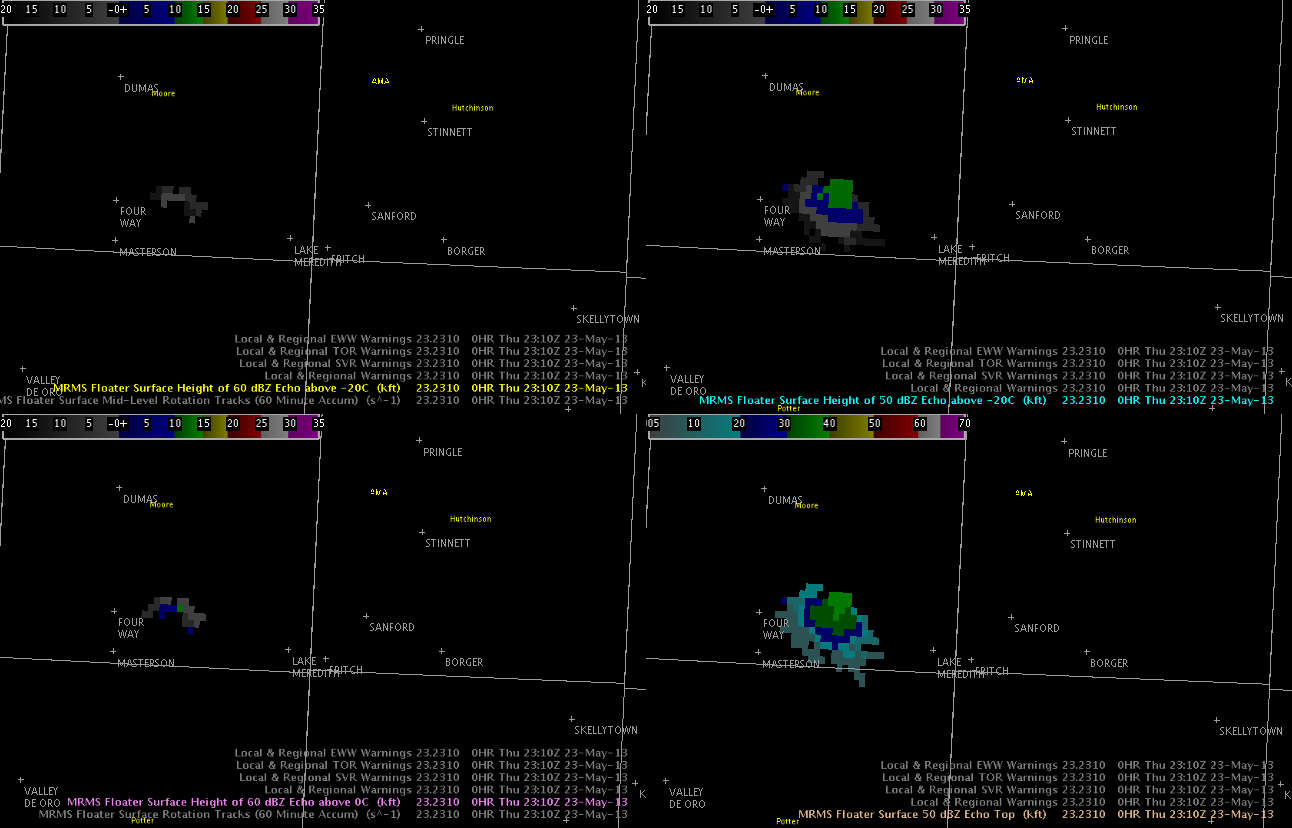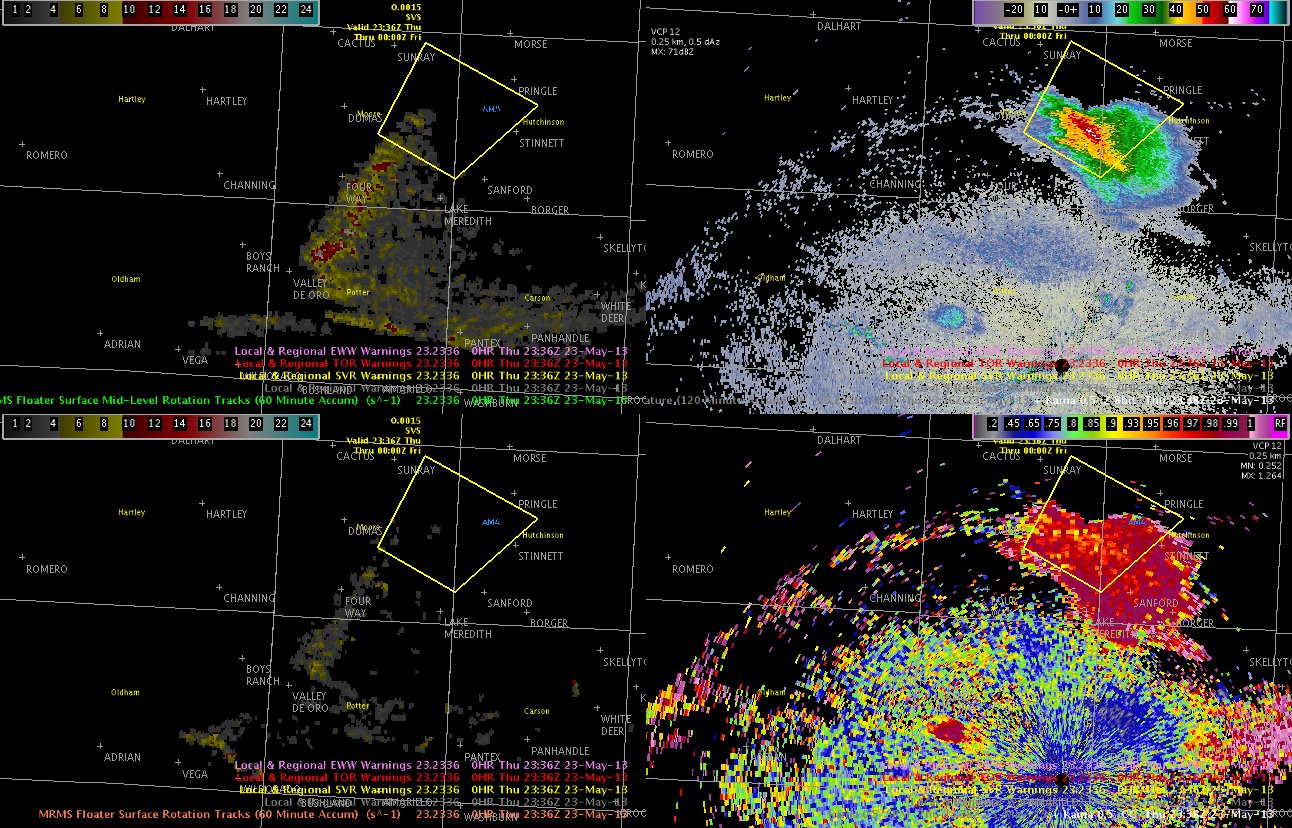The 50 dbz echo top continues to be one of my favorite parameters for quick and easy interrogation should things get busy. It’s a nice way to see the approximate height of the 50dbz core. Height of the 50dbz core above -20C is also a nice touch to analyze those really big storms that may need more significant hail wording.
The MESH and HSDA were both doing a good job with this storm. We did not get any hail reports, but that is likely due to the rural locations where the storm was tracking. Seeing the MESH indication of 1 inch hail and the HSDA forecast of large hail added confidence in the warning decision making process and it only took a few seconds to glance at these products. Therefore, there was still time to go through a complete review of base reflectivity and SRM data in all_tilts. The algorithm hail trends reflected what one would expect based on all_tilts base data.
The mid level rotation track was a nice way to view the life of this storm. Initially there was good mid level rotation, but this rotation begins to weaken with time and the warning was allowed to expire early. The decision to expire the warning early was based primarily on trends within MESH, HSDA, and 50dbz echo tops. But the loss of rotation was icing on the cake for letting the warning expire. (Jeremy Wesely)

Jeremy Wesely
